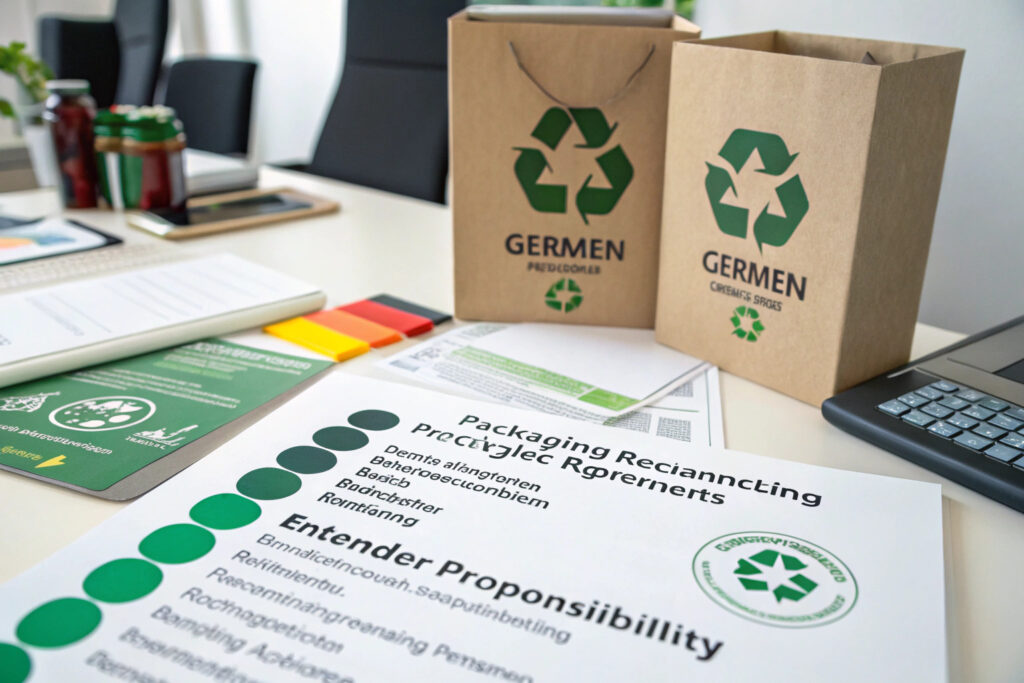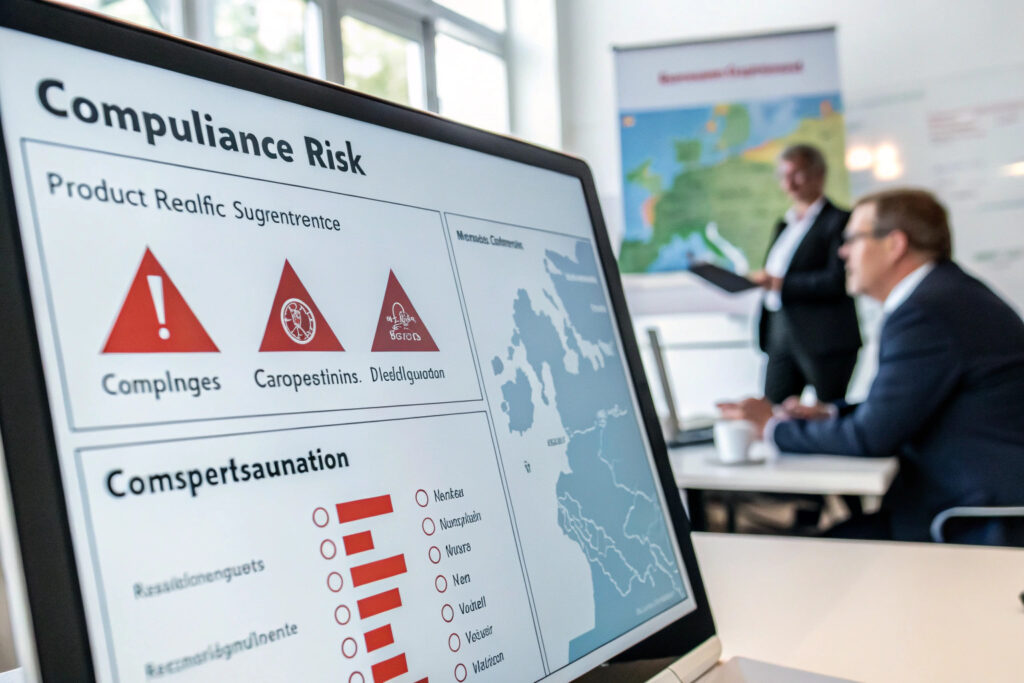Entering the German market with fabric masks requires navigating one of Europe's most rigorous regulatory landscapes. German consumers and authorities expect clear compliance with specific national standards, environmental regulations, and precise labeling requirements. Understanding these requirements from the sourcing stage prevents costly rejections, legal issues, and brand reputation damage in this valuable but demanding market.
To source compliant fabric masks for the German market, you must ensure products meet DIN SPEC 91053 requirements for community masks, comply with REACH chemical regulations, carry proper CE marking as PPE Category I if making protective claims, and provide complete German-language labeling with precise filtration and breathability data. Additionally, environmental compliance through packaging regulations and potential extended producer responsibility requirements must be addressed.
Germany has developed specific standards for community masks that go beyond general EU requirements, reflecting their methodical approach to product safety and performance. Successfully sourcing for this market requires understanding both the formal regulations and the market expectations that have developed among German consumers. Let's examine the specific compliance requirements and how to ensure your sourced masks meet them.
What Are the Essential German Standards for Fabric Masks?
Germany has established specific standards that define expectations for community masks, creating a clear framework for compliance.

What does DIN SPEC 91053 require?
The DIN SPEC 91053 standard defines requirements for community masks in Germany, focusing on three key areas: filtration efficiency (≥90% for particles 3μm), breathability (pressure difference ≤3.0 mbar for basic level, ≤2.0 mbar for higher level), and material safety (OEKO-TEX® Standard 100 Class I or equivalent). This standard represents the baseline expectation for masks marketed in Germany, even when not legally mandatory. Manufacturers should provide test reports from accredited laboratories demonstrating compliance with these specific parameters.
How do PPE regulations apply?
If making any protective claims beyond being a simple community mask, your product may be classified as PPE Category I under Regulation (EU) 2016/425, requiring CE marking. This involves creating a technical documentation file, issuing a EU declaration of conformity, and following specific conformity assessment procedures. The distinction between "community mask" and "protective mask" hinges largely on marketing claims and intended use statements. Our compliance team carefully navigates this distinction to ensure proper classification without unnecessary regulatory burden.
What Chemical Compliance and Safety Standards Must Be Met?
Germany's strict chemical regulations require careful attention to material composition and manufacturing processes.

How does REACH compliance impact mask sourcing?
The EU REACH regulation restricts numerous substances in textiles, including specific heavy metals, phthalates, and certain dyes. For the German market, compliance with Appendix XVII of REACH is mandatory, with particular attention to AZO dye restrictions and nickel release limits. Manufacturers must provide evidence of compliance through test reports from accredited laboratories, ideally using the specific testing methods referenced in the regulation. Our sourcing process includes comprehensive material testing that exceeds basic requirements to ensure full compliance.
What about specific German chemical concerns?
Germany has particular sensitivity around formaldehyde and pesticide residues in textiles, often expecting standards beyond minimum EU requirements. The UBA (German Environment Agency) maintains lists of substances of concern that may attract scrutiny even when not explicitly regulated. Proactive testing for these substances, even when not strictly required, demonstrates commitment to the German market's expectations. Our standard compliance package includes testing for 300+ substances to address both regulatory and consumer concerns in the German market.
What Labeling and Documentation Requirements Apply?
German labeling requirements are exceptionally detailed, with specific language and content expectations.

What must appear on German mask labels?
Labels must be in German language and include: manufacturer/importer details, mask type designation, performance data (filtration efficiency and breathability with test standard references), care instructions including washing temperature and cycle count, and any applicable conformity marks. Additionally, the composition of materials must be clearly stated using standardized textile labeling terminology. Our German market masks include comprehensive labeling that addresses both regulatory requirements and consumer information expectations.
How should performance data be presented?
German consumers expect transparent performance data presented in clear, measurable terms. Rather than vague marketing claims like "high protection," labels should state specific filtration percentages tested according to recognized standards. The most trusted presentations include both filtration efficiency (e.g., "≥90% filtration efficiency for 3μm particles per DIN SPEC 91053") and breathability metrics (e.g., "Breathability: 2.1 mbar pressure difference"). This transparency builds trust in the rigorous German market.
What Environmental and Packaging Regulations Apply?
Germany's environmental regulations extend to packaging and product end-of-life considerations.

How does packaging compliance work in Germany?
The German Packaging Act (VerpackG) requires all companies placing packaging on the German market to register with the Zentrale Stelle Verpackungsregister (ZSVR) and participate in a dual system for packaging recycling. This includes both shipping and retail packaging. Failure to comply can result in significant fines and sales prohibitions. Our fulfillment services include proper packaging registration and compliance for clients selling in the German market.
What about extended producer responsibility?
While fabric masks themselves don't currently fall under specific extended producer responsibility schemes in Germany, the trend toward circular economy regulations means forward-thinking companies should consider end-of-life aspects. Providing clear disposal information and considering take-back programs can demonstrate environmental responsibility valued by German consumers. Our sustainable mask lines include specific end-of-life guidance aligned with German waste separation practices.
What Verification and Certification Should You Require from Suppliers?
Ensuring compliance requires specific documentation and verification processes with manufacturing partners.

What documentation proves compliance?
Manufacturers should provide comprehensive technical documentation including: test reports from accredited EU laboratories showing compliance with DIN SPEC 91053; material safety data sheets with full composition disclosure; REACH compliance test reports; and manufacturing process controls documentation. For PPE classification, the technical documentation file must include risk assessment, design drawings, and conformity assessment procedures. Our quality system generates this documentation as a standard deliverable for German market products.
How can you verify third-party testing?
Accredited laboratory reports should come from facilities with appropriate scope accreditation for the specific tests conducted. In Germany, DACHS accredited laboratories are particularly well-regarded. Verification should include checking the accreditation scope, date of testing, and whether the tested samples represent current production. We partner with specifically accredited EU laboratories for our German market testing to ensure unquestioned validity.
What Are the Consequences of Non-Compliance?
Understanding the risks of non-compliance helps prioritize the necessary investments in proper sourcing.

What regulatory actions might occur?
German market surveillance authorities can remove non-compliant products from the market, impose significant fines, and in severe cases pursue criminal liability for intentional violations. The German Customs Authority actively checks imports for compliance with relevant regulations, particularly CE marking abuses. Our compliance monitoring includes regular review of regulatory enforcement trends to anticipate increased scrutiny areas.
How does competitor enforcement work?
Germany's strict competition law (UWG) allows competitors to challenge improper claims through cease-and-desist letters and legal action. Even technically compliant products can face challenges if marketing claims are deemed misleading. The precise German market has low tolerance for exaggerated claims or vague performance statements. Our marketing review process specifically addresses UWG compliance to prevent competitor challenges.
Conclusion
Sourcing compliant fabric masks for the German market requires meticulous attention to specific national standards, chemical regulations, labeling requirements, and environmental obligations. The foundation rests on DIN SPEC 91053 compliance for performance, REACH compliance for chemical safety, proper classification between community masks and PPE, and comprehensive German-language labeling. Success in this market comes from embracing the German preference for precision, transparency, and regulatory diligence rather than treating compliance as a barrier to overcome.
The investment in proper German market compliance delivers returns through access to one of Europe's largest and most valuable markets, enhanced brand reputation for quality and responsibility, and reduced risk of costly regulatory actions or competitor challenges.
Ready to source fully compliant fabric masks for the German market? Contact our Business Director, Elaine, at elaine@fumaoclothing.com to discuss our Germany-specific compliance expertise and manufacturing capabilities. We'll ensure your products meet all regulatory requirements while delivering the quality and performance German consumers expect.

























